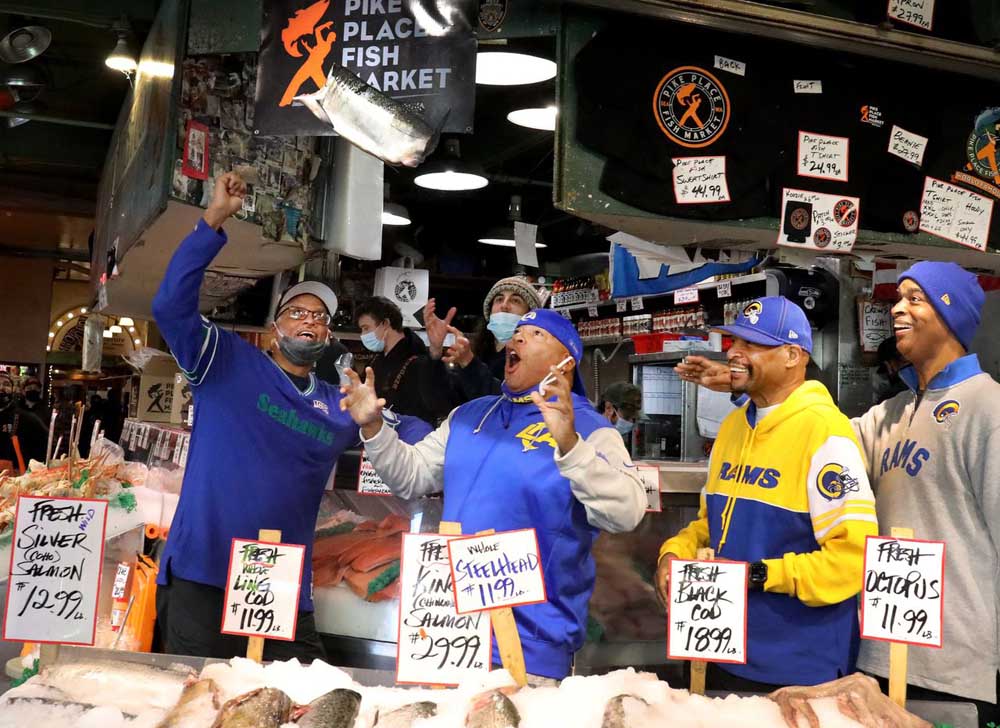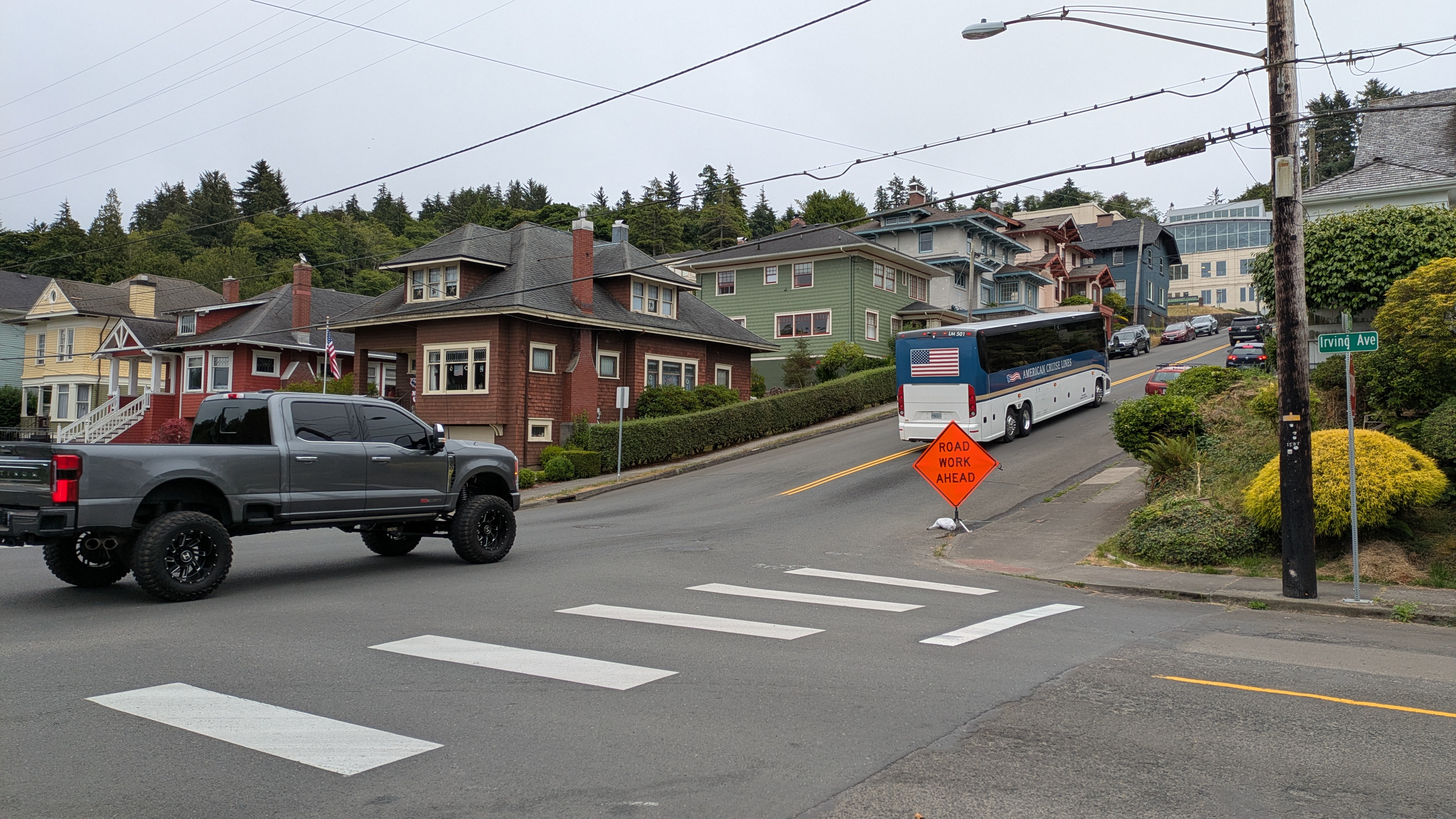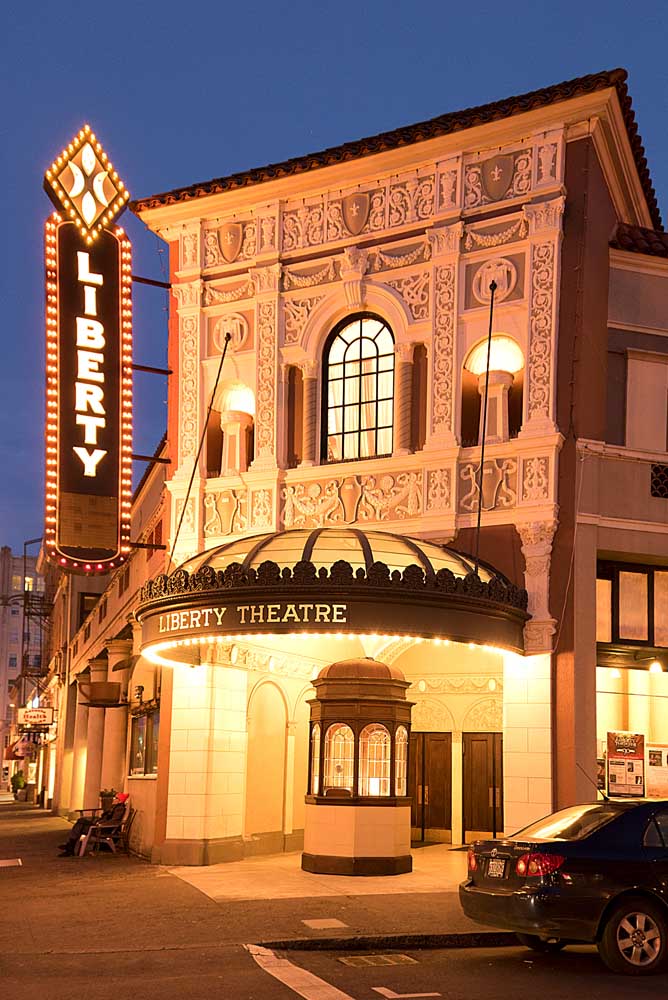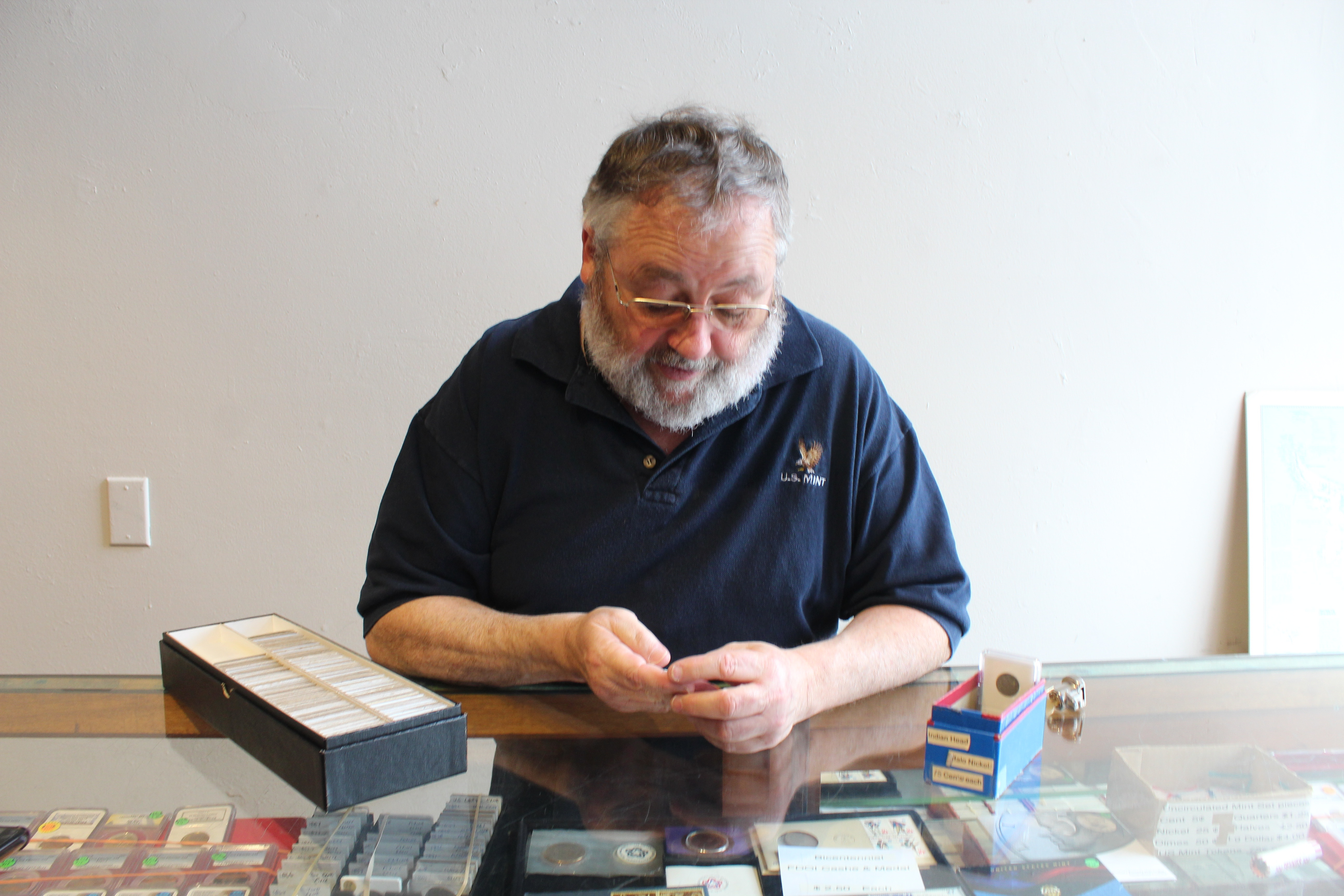Place Place navigates path back amid pandemic
Published 10:51 am Friday, October 22, 2021

- Visiting football fans Hugh Roberts, left, Eric Paris, his brother Kevin Paris and Tony Laughton get a kick out of the flying fish at the famous Pike Place Market stand earlier this month.
SEATTLE — Like many vendors at Pike Place Market, Scott Chang isn’t sure when business will resume its pre-COVID normal.
Trending
True, this summer brought welcome crowds of tourists and locals to the open-air Seattle landmark. Sales at See Lee Gardens, the flower business owned by Chang’s family, are nearly back to where they were before the pandemic shuttered the market’s picturesque warren of stalls and shops.
But there’s another, more somber reason for See Lee’s rebound: Several competing flower vendors haven’t come back to the market, or are only here a few days a week. They now sell at other outlets that don’t require the long commute into downtown Seattle.
Even Chang, for the first time, is selling some of his flowers elsewhere, partly as a hedge against future COVID-related disruptions.
Trending
“We’re never going to quit Pike Place,” says Chang, 36, of the place that has hosted his family business since the 1980s. But the pandemic “was a big eye-opener that we have to look for other venues.”
Fifty years after Pike Place Market was nearly razed in the name of progress, the sprawling institution faces another, even more complex nemesis.
Although many of the market’s more than 500 businesses saw solid sales this summer, visitor numbers are still below their 2019 levels. Many vendors and farmers are still on reduced hours, and dozens haven’t returned or are squarely on the fence about coming back.
“It truly is up in the air right now,” says Jim Johnson, owner of Olympia-based Johnson Berry Farm, a 22-year market stalwart that hasn’t been back since last fall.
Even many of those vendors who have made it back did so by shifting how — and sometimes where — they do business as they prepare for their second pandemic winter.
Collectively, it points to changes for an iconic, eclectic retail community that was facing challenges before COVID, including labor shortages and competition from online retailers and from a proliferation of farmers markets in virtually every town and neighborhood.
Although Pike Place Market remains the region’s go-to source for a fully immersive “meet the producer” experience, “we can’t live on it alone,” says Mary Bacarella, executive director of the Pike Place Market Preservation and Development Authority, which owns and manages the 9-acre, 14-building complex. The market, Bacarella, “has to adapt.”
That face-to-face quality is, of course, precisely why Pike Place Market suffered so deeply from COVID.
Even after the state reopened nonessential businesses in June 2020, the tourists who historically provide around half the market’s sales were all but absent. Although loyal locals came out in droves, overall visitor numbers stayed at less than half their pre-pandemic levels into early 2021, according to data from the Downtown Seattle Association.
Fewer tourists meant fewer vendors, which in turn left the market even less attractive to visitors.
“One summer to another, it went from making hundreds of dollars a day to making dozens of dollars a day,” says Daniel Fleming, 48, a photographer and digital artist who has rented a daystall in the market since 2007.
The entire market organization shrank. Revenues for the market’s Preservation and Development Authority, which charges some tenants a percentage of retail sales, fell from a record $22.6 million in 2019 to $13.2 million in 2020, leading to cost cutting and layoffs of 15% of its staff. “They took a hit,” says Bacarella.
Recovery has been slow and has come through both a top-down relief effort and bottom-up individual enterprise.
The Preservation and Development Authority, for example, has offered tenants $3.7 million in rental assistance; the market’s fundraising arm, the Pike Place Market Foundation, offered almost $700,000 in small-business grants. There were programs to help vendors apply for federal Paycheck Protection loans, promotion campaigns aimed at locals and even TV ads. And despite the losses and extra expenses, Bacarella says the Preservation and Development Authority still has a $18 million cash reserve and as of August, has generated $11.6 million of what is hoped to be a $14.8 million year.
Individual businesses, meanwhile, came up with their own adaptations. At the Sound View Cafe, Alex Amon, whose family purchased the place almost 30 years ago, completely reengineered the menu, replacing many complicated higher-end items with simpler selections that “were more cost-efficient for us.”
At the Cinnamon Works bakery, owners Michael Ruegamer and Judy Beggs cut expenses by doing more of the work themselves — for a time, Judy handled all baking and selling single-handedly. They also benefited from customers’ patience: During the pandemic, Judy says, “people learned how to wait in line,” which allowed the bakery to operate with fewer counter staff.
Like retailers everywhere, many market vendors also found ways to rely less on face-to-face sales. “We definitely upped our game online,” says Devynn Patterson at Marakesh Leather, a market presence since 1971. The business saw online sales jump from 5% of total sales pre-COVID to around 35% today.
For vendors with little or no online presence, the Preservation Development Authority organized how-to webinars by some of the market’s web-savvy sellers. Jeweler Twyla Dill, of Twyla Dill Design, has taught vendors how to “go from zero to having a Shopify website,” she says.
But some vendors also found ways to reduce their reliance on the market itself.
“To help pick up the slack” in sales, Lynden-based Holmquist Hazelnut Orchards stepped up sales at 16 other regional farmers markets, many of which were thriving even as Pike Place struggled, says co-owner Richard Holmquist.
For Seattle artist Dan Gregory, a stall vendor for almost 19 years, the pandemic strategy was to open a gallery nearby for local artists, which now accounts for 20% of his sales. With the “unknown of COVID, I didn’t know where the market was going, where the economy was going. I felt like I had a little more control if I had my own storefront,” he said.









